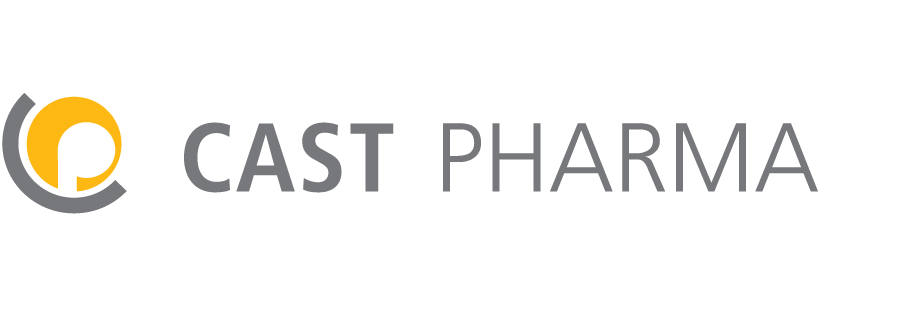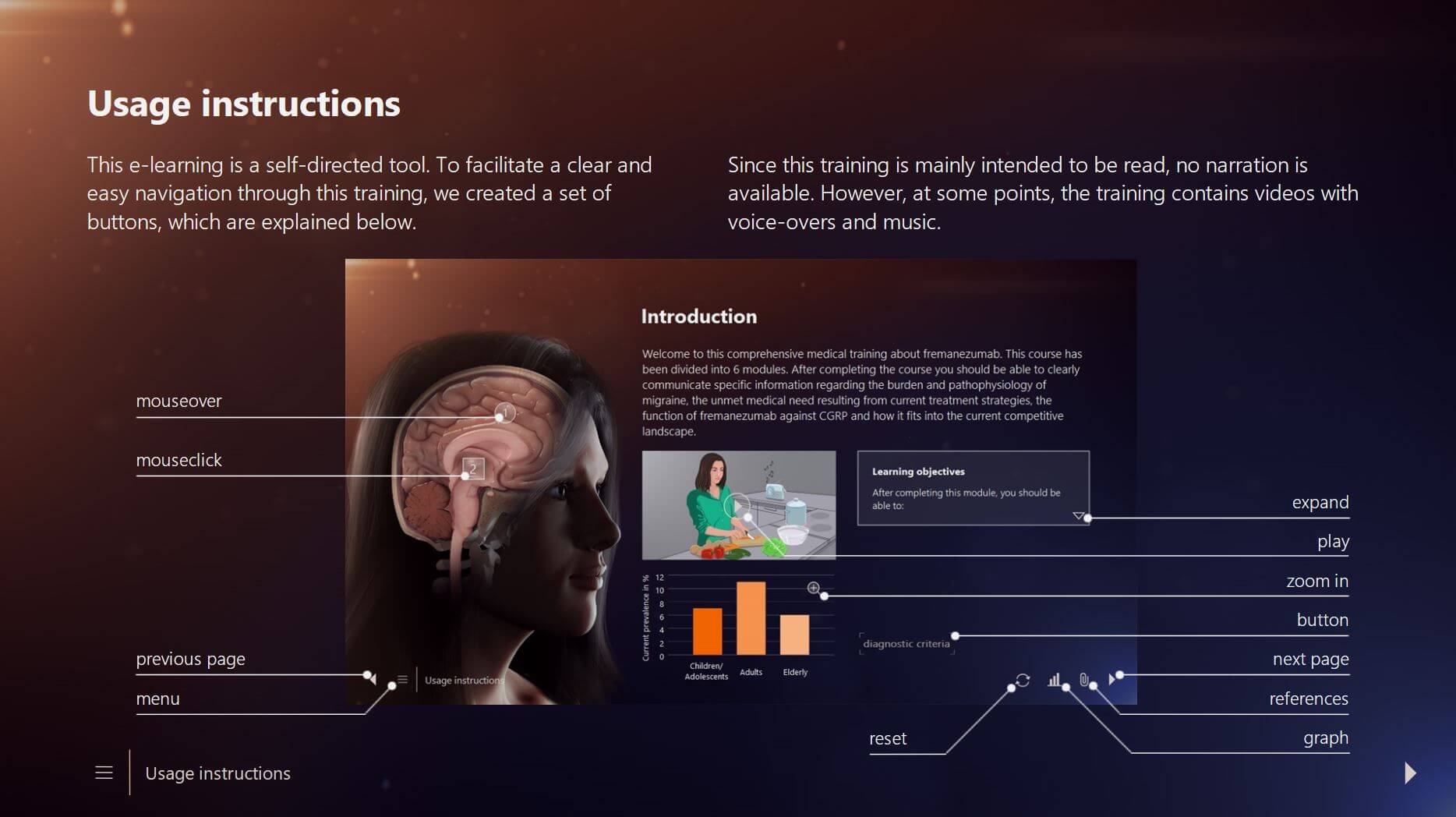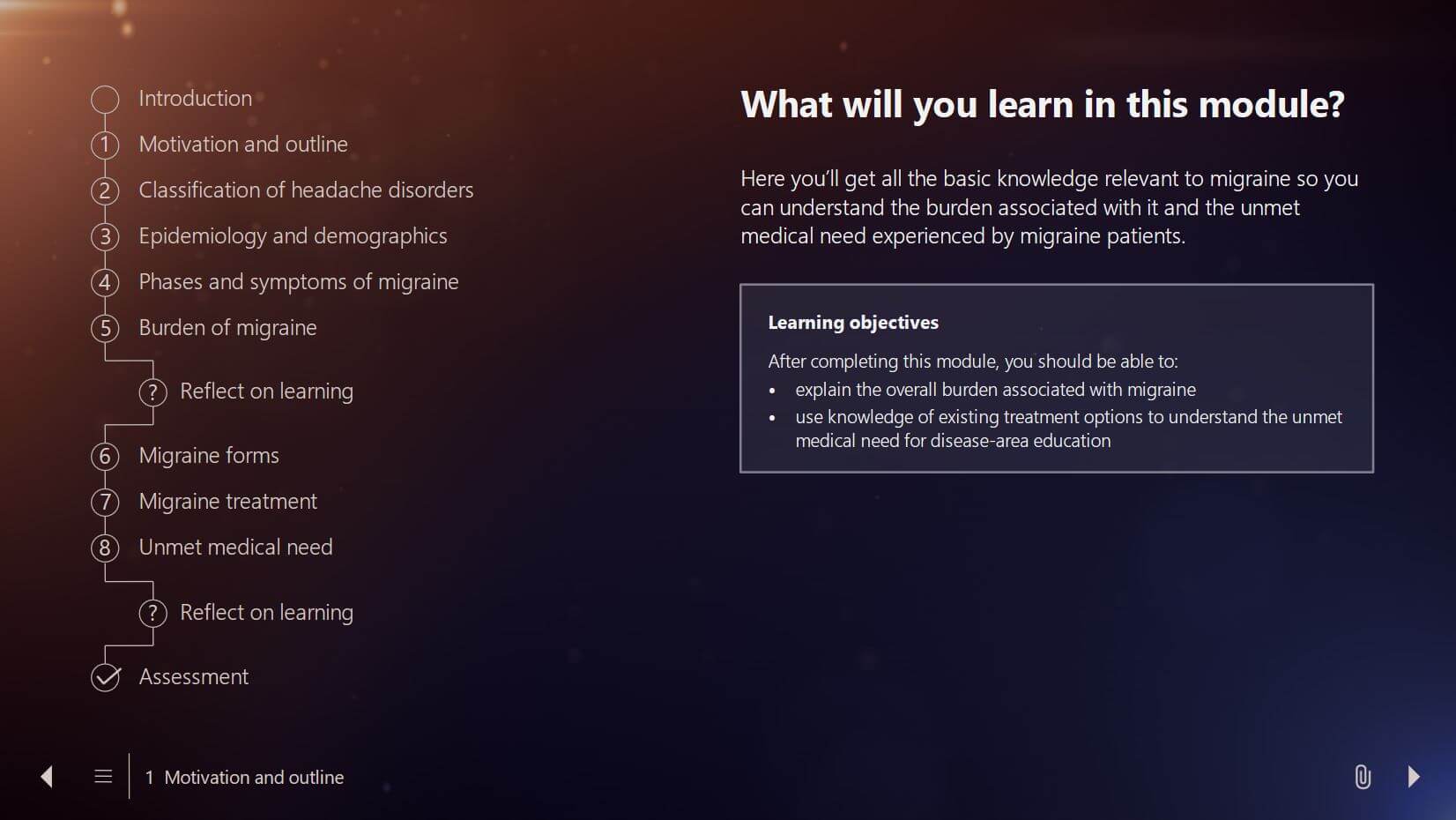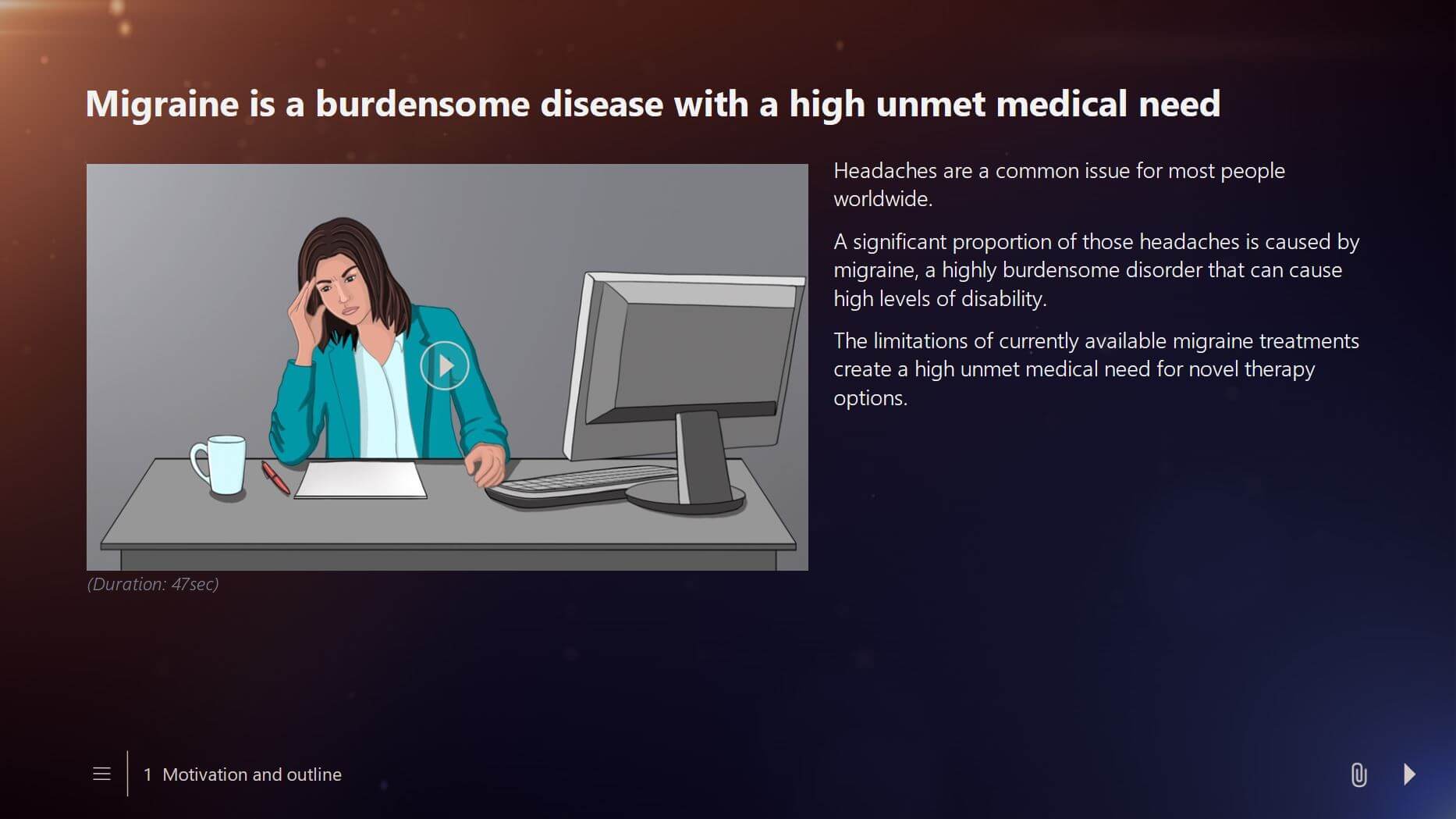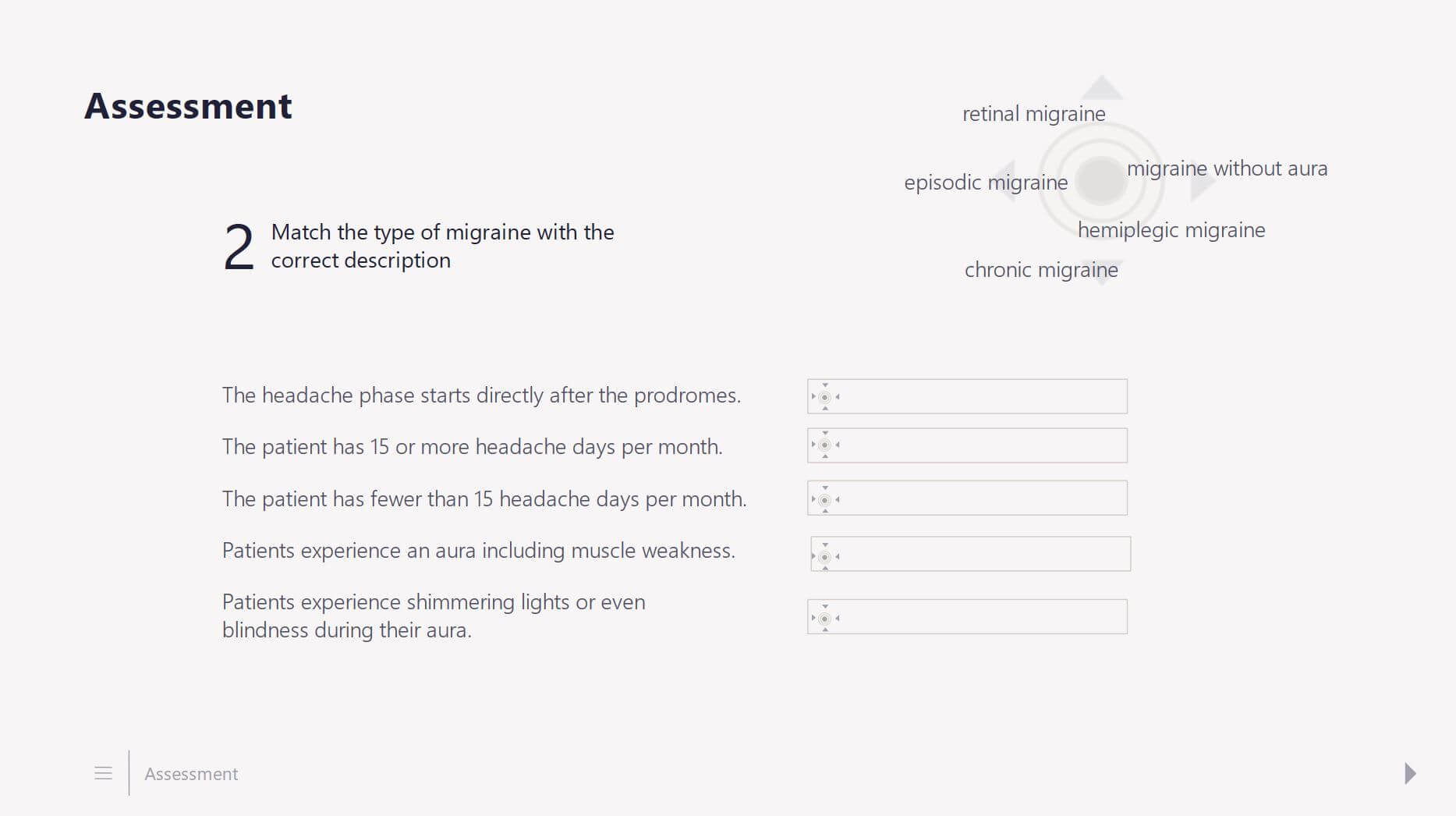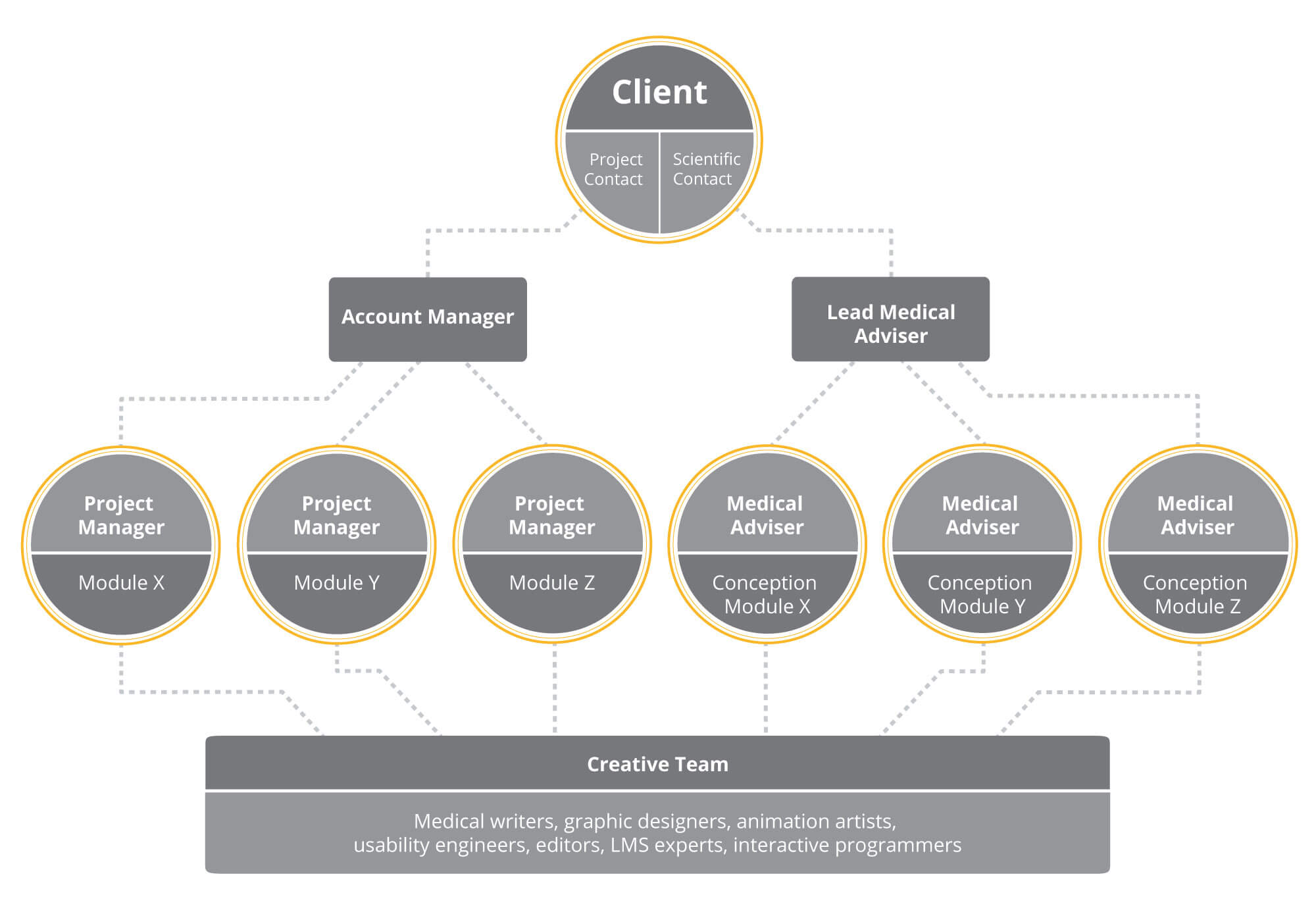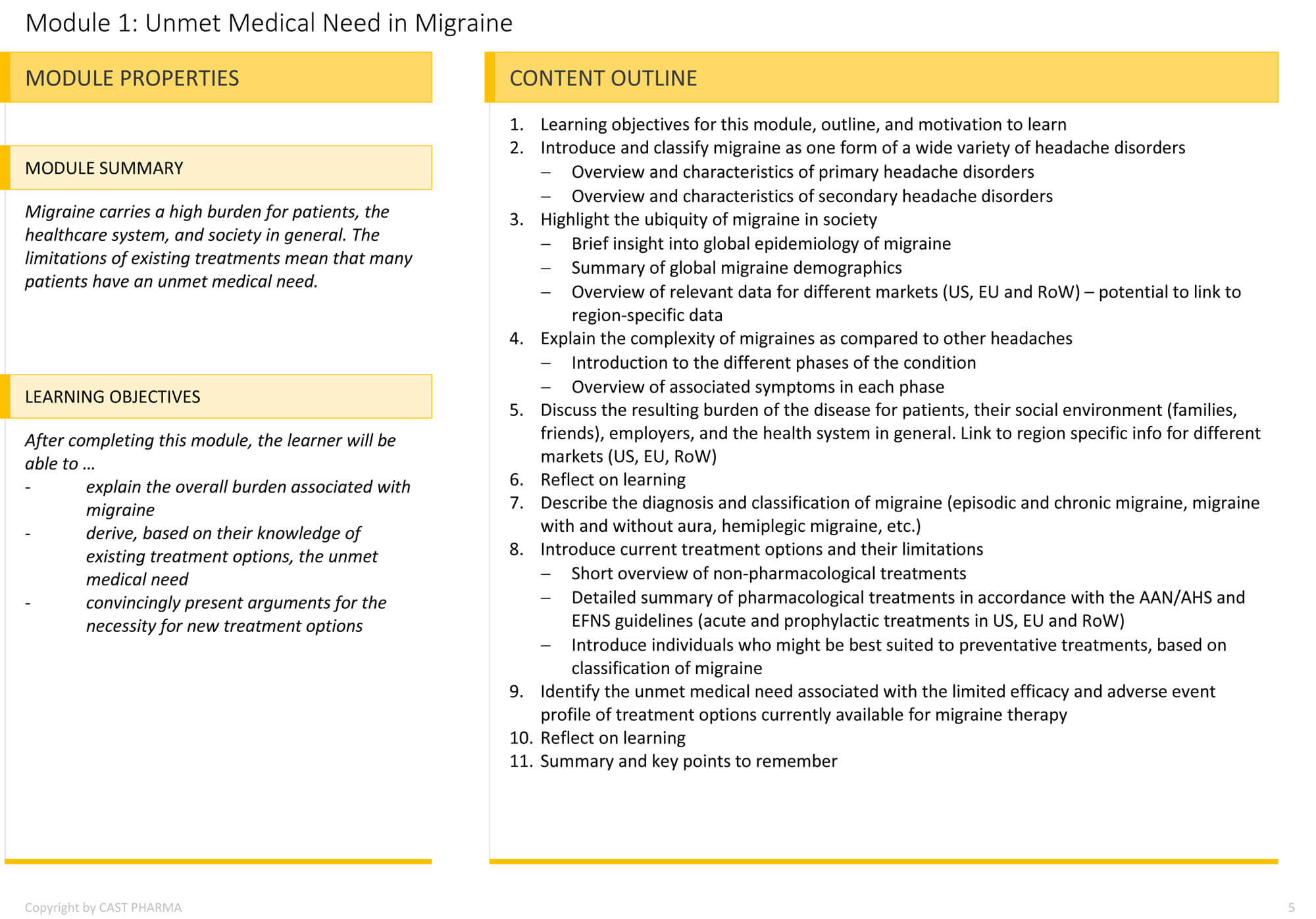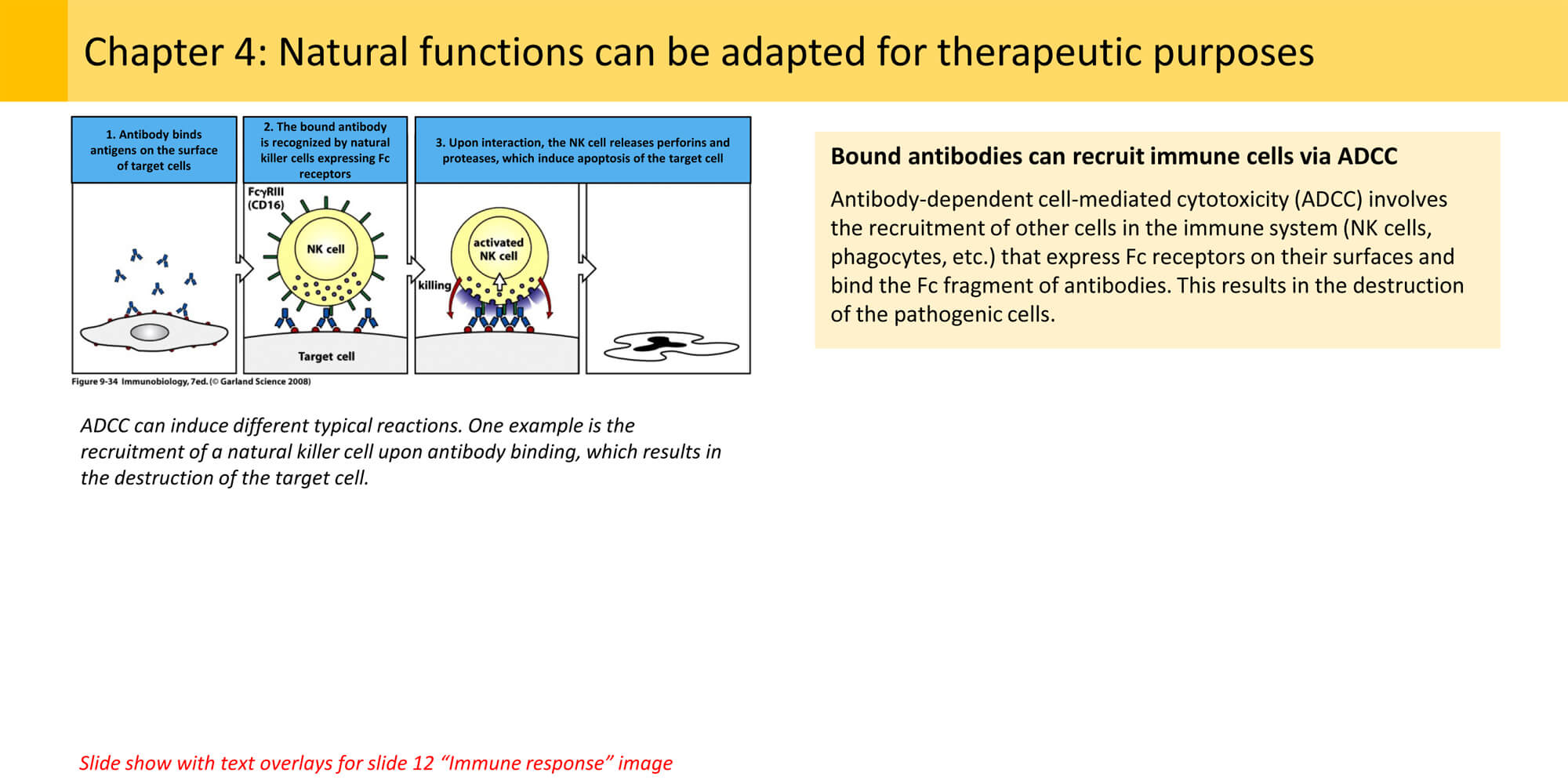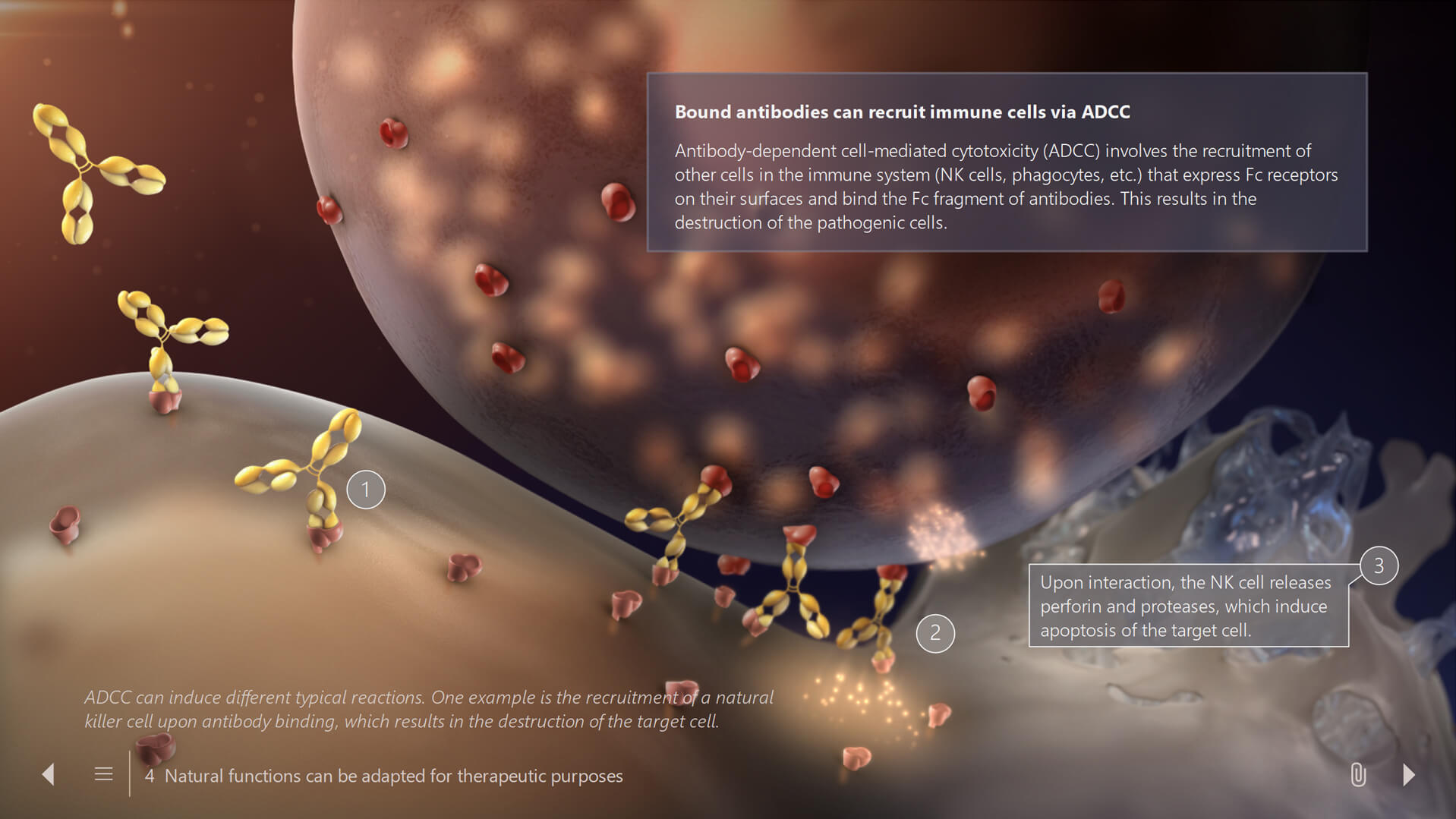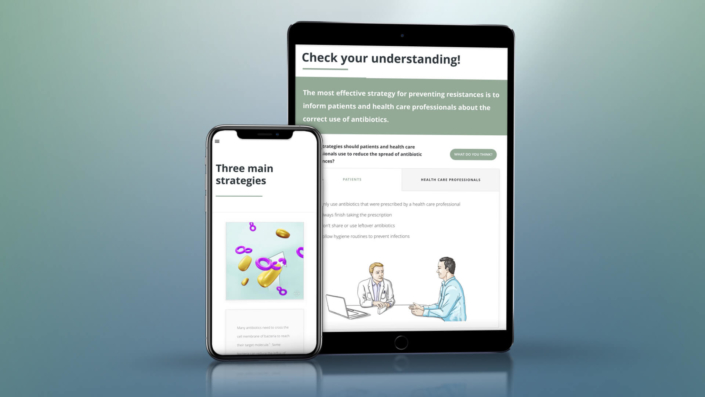You are here: Home » Medical Learning and Training » Onboarding
The Challenge
Headaches are a common issue for most people worldwide. A significant portion of those headaches is caused by migraine, a highly burdensome disorder that can cause high levels of disability. Migraine treatments currently available have many limitations, creating a high unmet medical need for new therapeutic options. Our client, a global top-20 pharmaceutical company, developed a novel treatment strategy to meet the unmet needs of migraine patients.
To prepare for an optimal product launch, the client contacted us to discuss strategies to train internal medical affairs audiences. These employees would have to be trained thoroughly to understand the product, the competitive landscape, the underlying studies, and the therapeutic area, allowing them to have in-depth discussions with experts in the field.
The decision was made to produce an eLearning course that would fit into the client’s learning management system and would allow for assessments and knowledge evaluations throughout the modules.
The eLearning was required to follow modern educational principles, the navigation had to be intuitive and easy to understand, and the story had to be consistent and build up knowledge step-by-step.
We would like to have a consistent visual story that features of a variety of interactive elements, infographics, videos, and animation instead of just text and boring charts
Project Start
At the beginning of every eLearning project, crucial decisions have to be made pertaining to the content and the technical specifications. Establishing the content and specifications as precisely as possible up front strongly influences the course of the project later on during production.
